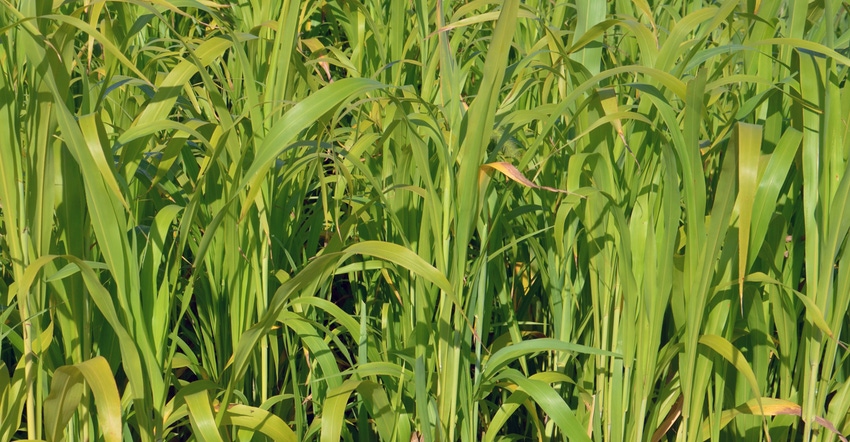August 16, 2018

By Victor Shelton
Cover crops can serve several purposes. One is livestock grazing.
If the cover crop was planted using funds from the Environmental Quality Incentives Program, then any grazing needs to be managed to guarantee that the original purpose isn’t compromised. Grazing is a secondary purpose in EQIP. Primary purposes are erosion control, soil compaction relief, nutrient management and soil health factors.
There are two possible time frames for fall-seeded cover crops to be grazed, and it’s specific to the cover crop planted. Either time frame can extend grazing season, reduce feed costs, and allow for longer rest and more growth on pasture fields not being grazed.
The more days livestock graze and aren’t fed something you must haul to them, the easier it is on your wallet. Feeding hay normally means removing nutrients from somewhere. Grazing forages returns most nutrients back to the land and can enhance biological life in the soil in the process.
If you really want quality forage for fall grazing, a brassica-oat-cereal-rye mix just can’t be beat. The brassicas and oats grow quickly in September with sufficient moisture and can produce quite a bit of forage in a very short time. Oats and possibly brassicas will normally winter-kill anyway. Cereal rye planted with them will continue to grow and come on strong the next spring, providing good cover and possibly a second opportunity to graze if conditions are favorable.
Planning crucial
Most cereal grains, such as wheat, triticale and cereal rye, planted in the fall don’t accumulate enough growth to graze in the fall. They can provide grazing the following spring if soil conditions allow. Spring often tends to be too wet to graze cereal grains. But if soil conditions prevail, livestock can graze early growth, and the annuals can still provide adequate cover to plant crops into in the spring.
Annuals planted into corn residue — especially ones with a lot of moisture such as turnips — can increase animals’ intake of corn residue, with the combination providing better gains than either independently.
It’s always best to allocate annuals and crop residues in one- to- seven-day intervals for the highest efficiency. Livestock shouldn’t be left on fields all winter. They also shouldn’t be fed hay or other products that would negatively affect the cover crop or soil conditions, or would require tillage to resolve prior to planting.
When grazing cover crops grown on cropland, it’s important that you know what herbicides and other pesticides have been used on the field, and what the wait period is prior to grazing. Always follow label restrictions.
A properly planned cover crop can add numerous options if you are currently grazing or plan to add livestock for additional soil health benefits. Proper planning — including factoring in potential carryover of previous herbicides, cover crop seed selection, establishment methods and timing — will help improve your overall cover crop experience. Explore how you can integrate cover crop grazing opportunities into your pasture-based livestock operation.
Shelton is a grazing specialist with the Natural Resources Conservation Service. He writes on behalf of the Indiana Conservation Partnership.
You May Also Like




